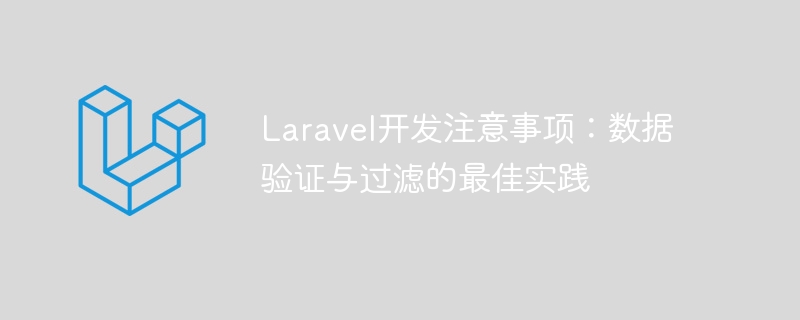

Laravel Development Notes: Best Practices for Data Validation and Filtering
In Laravel development, data validation and filtering are very important parts, they can ensure that the application The data received by the program is valid, safe, and in the expected format. This article will introduce some best practices for data validation and filtering to help developers effectively process data in Laravel projects.
Laravel provides powerful and easy-to-use data validators. Validation rules and error messages can be passed to the data validator by using the validate function in the method in the controller. For example:
public function store(Request $request)
{
$validatedData = $request->validate([
'name' => 'required|string|max:255',
'email' => 'required|email|unique:users',
'password' => 'required|string|min:8',
]);
// 存储数据...
} The above code will verify the name, email and password fields in the request, and return the corresponding fields if the verification fails. error message.
In addition to the regular validation rules provided by Laravel, developers can also customize validation rules to suit specific business needs. This can be achieved by creating a custom validation rule class. For example, if you need to check if a phone number matches a specific format, you can do this:
namespace AppRules;
use IlluminateContractsValidationRule;
class PhoneNumber implements Rule
{
public function passes($attribute, $value)
{
// 执行电话号码验证逻辑...
}
public function message()
{
return '电话号码不符合要求。';
}
}Then, use a custom validation rule in your controller like this:
public function store(Request $request)
{
$validatedData = $request->validate([
'phone' => ['required', new PhoneNumber],
]);
// 存储数据...
}Before receiving user input data, data filtering must be performed to prevent malicious attacks. Laravel provides many filters that can help filter user input. One of the commonly used filters is the strip_tags function, which removes HTML tags from the input. For example:
public function store(Request $request) {
$filteredData = $request->input('content');
$filteredData = strip_tags($filteredData);
// 对数据进行处理...
}Using Laravel's strip_tags filter function, you can ensure that the data does not contain any malicious HTML tags before processing user input.
When making database queries, it is a good practice to use Laravel's query builder to filter data. The query builder can effectively prevent SQL injection attacks and provides a flexible filtering mechanism. For example, you can use the query builder's where method to filter query results:
$users = DB::table('users')->where('active', true)->get(); The above code will only return active fields with values true user records.
When processing users' sensitive information (such as passwords, credit card numbers, etc.), encryption must be performed to protect the user's privacy and Safety. Laravel provides a convenient encryption mechanism, and you can use the encrypt and decrypt functions to encrypt and decrypt data. For example:
$encryptedData = encrypt($sensitiveData); $decryptedData = decrypt($encryptedData);
The above code will encrypt and decrypt sensitive data.
Summary:
Data validation and filtering are a very important part of Laravel development. By using the data validators, custom validation rules, and filter functions provided by Laravel, we can ensure that the data received by the application is valid, safe, and in the expected format. At the same time, using the query builder to filter database query results and encrypt sensitive information can further protect user privacy and security. We hope that the above best practices can help developers better handle data validation and filtering in Laravel projects.
The above is the detailed content of Laravel Development Notes: Best Practices for Data Validation and Filtering. For more information, please follow other related articles on the PHP Chinese website!




